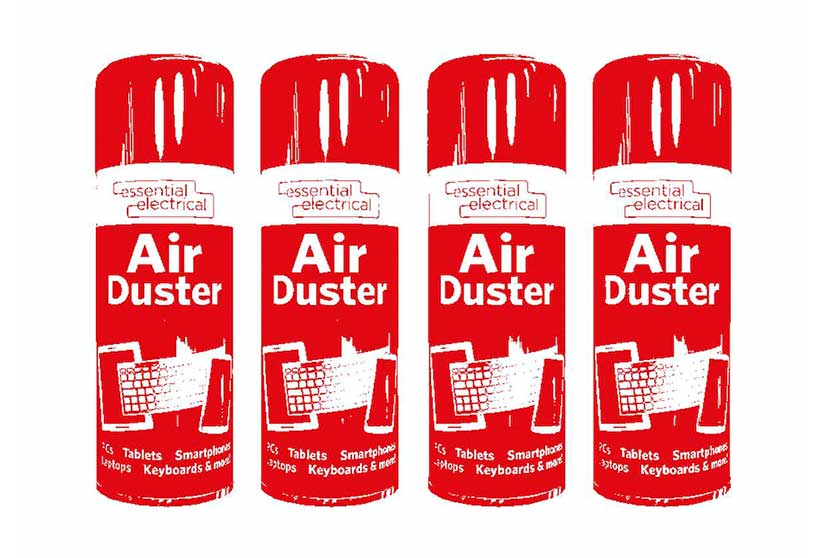The most commonly misused drugs are alcohol, prescription drugs, and illegal drugs. However, according to the National Institute on Drug Abuse (NIDA), many people also misuse inhalants.
Inhalants are products that can be inhaled through the nose or mouth. They’re often found at the home or workplace. One frequently abused inhalant is known as difluoroethane, which was involved in singer and rapper Aaron Carter’s 2022 death.
What Is Difluoroethane?
Difluoroethane is an extremely flammable gas. Colorless and odorless, it’s classified as a halogenated hydrocarbon. It has many other names (synonyms), including:
- 1,1-difluoroethane
- 1,1-difluoro
- DFE
- Ethane
- Ethylidene difluoride
- Ethylidene fluoride
- Freon 152a
- HFC-152a
- R-152a
As a synthetic substance, difluoroethane consists of mercury-catalyzed hydrogen fluoride and acetylene. It has a molecular weight of 66, a melting point of −117 °C (−179 °F; 156 K), a boiling point of −25 °C (−13 °F; 248 K), a solubility of 0.54% @ 0 °C, and a vapor pressure of 536 kPa (4020 mmHg) @ 21.1 °C.
It acts as a more eco-friendly alternative to chlorofluorocarbons (CFCs).
Uses
Difluoroethane is often used as a refrigerant and a propellant for aerosol sprays. It’s also sometimes used in gas duster products and in the manufacturing of other chemicals.
In addition, it’s effective for detecting vacuum leaks in gas chromatography–mass spectrometry (GC-MS) systems.
There are no established occupational exposure limits for people who work with difluoroethane. However, the substance can have negative health effects, especially when abused.
Difluoroethane Abuse
Some people abuse difluoroethane by inhaling it to get high. As a central nervous system depressant, the substance can cause relaxation and euphoria (intense joy) when inhaled.
Like all forms of inhalant abuse, difluoroethane abuse poses serious health risks.
To reduce abuse, some difluoroethane manufacturers add a bittering agent to the product. However, because this strategy is not legally required, it has not been adopted by enough manufacturers to cause a significant reduction in difluoroethane abuse.
The most common risks of difluoroethane abuse include:
Heart Problems
Inhaling difluoroethane may raise your risk of angina, which is chest pain caused by reduced blood flow to the heart. It’s often a sign of coronary disease, a disease of the heart’s major blood vessels.
Also, people who regularly inhale difluoroethane, especially in large amounts, may develop cardiac arrhythmia (improper beating of the heart). This condition can be fatal.
Angioedema
Angioedema is swelling of the deeper layers of the skin. It occurs due to fluid build-up. While it can impact any part of the body, the most commonly affected parts are the eyes, lips, genitals, hands, and feet.
If angioedema affects your tongue or throat, it may restrict your breathing and become life-threatening.
Oral Frostbite
Oral frostbite occurs when your tongue, lips, or other parts of your oral cavity are exposed to temperatures below their freezing point. Common symptoms include pain, numbness, and difficulty moving the affected areas.
Skeletal Fluorosis
Skeletal fluorosis is a bone disease caused by an excessive amount of fluoride in the bones. It weakens your bones and joints, which can lead to painful damage.
Frequent difluoroethane abuse significantly increases your risk of skeletal fluorosis. That’s because your body metabolizes difluoroethane into a fluorinated compound.
Physical Dependence & Withdrawal
People who regularly inhale difluoroethane may become physically dependent on it. That means they experience withdrawal symptoms when they stop using it. The most common difluoroethane withdrawal symptoms include:
- nausea and vomiting
- shaking
- sweating
- irritability
- anxiety
- depression
- increased heart rate
Some people also experience psychosis. Psychosis is a temporary loss of connection with reality. It causes adverse effects such as:
- paranoia (irrational distrust of others)
- delusions (beliefs that conflict with reality)
- hallucinations (seeing, hearing, or feeling things that aren’t really there)
In most cases, withdrawal symptoms start within 48 hours after you stop using difluoroethane. They typically last 3 to 7 days.
Some symptoms may disappear before others.
In one case report, a 39-year-old man experienced multiple withdrawal symptoms while quitting difluoroethane after six months of daily use. His irritability and increased heart rate stopped after 3 days. However, his psychosis persisted, and he was transferred to an inpatient mental health treatment facility.
Overdose
Difluoroethane has contributed to fatal overdoses. However, it’s usually not included on routine toxicology screens, so its involvement in overdoses often goes undetected. Symptoms of a difluoroethane overdose may include nausea, increased heart rate, and loss of consciousness.
Difluoroethane Abuse Treatment Options
If you or someone you love abuses difluoroethane, seek help at a substance abuse treatment program. These programs offer a variety of services to help you or your loved one safely stop using difluoroethane. These services include:
- medical detox, in which doctors help you manage withdrawal symptoms as you get difluoroethane out of your system
- behavioral therapy, in which a mental health professional helps you manage difluoroethane cravings and any mental health concerns that may have led you to abuse difluoroethane
- support groups, in which you can discuss your experiences with other people recovering from drug abuse and addiction
To learn more about treatment for difluoroethane abuse, please reach out to Northeast Addictions Treatment Center. Our board-certified healthcare providers offer comprehensive, evidence-based care to help you or your loved one stay sober.
Sources
Federal Practitioner — Difluoroethane Inhalant Abuse, Skeletal Fluorosis, and Withdrawal
Forensic Science International — A sudden death related to 1,1-difluoroethane inhalation—A case report and brief review of the literature
Journal of Clinical Toxicology — Oral frostbite injury from intentional abuse of a fluorinated hydrocarbon
National Institute on Drug Abuse — Inhalants DrugFacts
Oxford University Press — Deaths Involving 1,1-Difluoroethane at the San Diego County Medical Examiner’s Office





